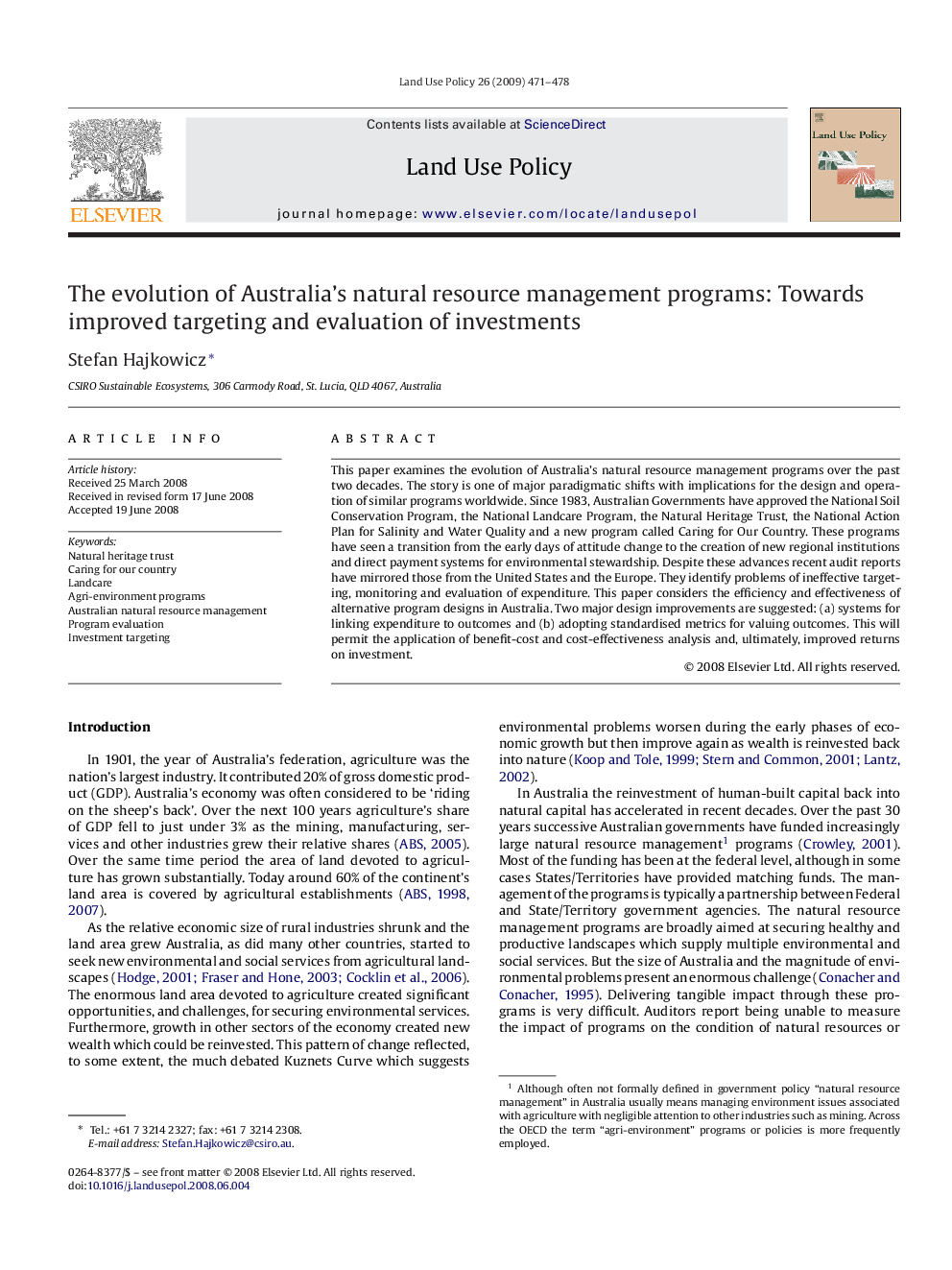| Article ID | Journal | Published Year | Pages | File Type |
|---|---|---|---|---|
| 93593 | Land Use Policy | 2009 | 8 Pages |
This paper examines the evolution of Australia's natural resource management programs over the past two decades. The story is one of major paradigmatic shifts with implications for the design and operation of similar programs worldwide. Since 1983, Australian Governments have approved the National Soil Conservation Program, the National Landcare Program, the Natural Heritage Trust, the National Action Plan for Salinity and Water Quality and a new program called Caring for Our Country. These programs have seen a transition from the early days of attitude change to the creation of new regional institutions and direct payment systems for environmental stewardship. Despite these advances recent audit reports have mirrored those from the United States and the Europe. They identify problems of ineffective targeting, monitoring and evaluation of expenditure. This paper considers the efficiency and effectiveness of alternative program designs in Australia. Two major design improvements are suggested: (a) systems for linking expenditure to outcomes and (b) adopting standardised metrics for valuing outcomes. This will permit the application of benefit-cost and cost-effectiveness analysis and, ultimately, improved returns on investment.
